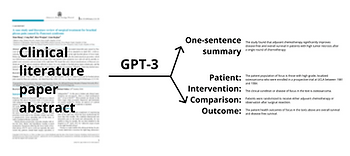Past Projects before PhD
Most of my previous work used machine learning applications(NLP) to support communities in the domains of Design and Creativity Thinking. To be more specific, I studied and explored innovative ways of supporting community-based novice designers in their design process. Currently, I am working to investigate how community members construct and explore conceptual representations of design situations that help them reason about complex problems.
In 2022 summer, I also brought my technical skills and stepped into the field of Healthcare. My research focused on the use of machine reading to assist physicians in making treatment decisions (GPT-3).

ProbLib
(C&C'21)
This is a world full of problems,
but designing and framing a GOOD problem is hard...
The Design Process is not linear:
-
Solutions are informed by the problems that designers choose to solve.
-
A problem gives a focal point, a frame of reference for exploring and evaluating solutions.
It is important for researchers & designers to define and frame a problem (problem-framing) during the design process. However, novice designers struggle with problem framing.
This work aims to help novices reflect on and include necessary design information. A web-based tool called ProbLib is created to cues novices to explicitly reflect on aspects of the problem such as the stakeholders.
Goal:

What we found?
In this study, we found that scaffolding using ProbLib helped novice designers in the following ways:
-
improved problem statement quality and participants’ confidence related to identifying design needs;
-
participants also included more information and at a more specific level of abstraction.
Moreover, there are interesting behaviors around: brainstorming, parallel prototyping, and creatively combining problem components to draw new connections within the problem space.

ProbMap
2020-2021
(UIST'21 Demo)
ProbMap is the extended work from ProbLib.
This project aims to help people make sense of community problems and better allocate community problems around similar stakeholders
It is always difficult to make sense of large scale public input.
Structure can help, but adding structure to a problem space also takes significant effort.
We designed ProbMap, which is a novel application for automatically constructing a design gallery from unstructured text input. Given a list of problem statements, ProbMap extracts and semantically groups the stakeholders to construct hierarchical search facets which enables designers to more efficiently navigate the problem statements.

How we explored in this project?
A novel feature extraction method to automatically extract stakeholders from problem statements:

Our work presents a new method for making sense of unstructured text-based design data, specifically problem statements, by automating design activities that are traditionally completed by expert designers.

Clinical Decision Support Tools (DSTs)
(Published in CHI'23)
2022 SUMMER
Clinical decision support tools (DSTs), powered by Artificial Intelligence (AI), promise to improve clinicians’ diagnosticand treatment decision-making process. However, no AI model is always correct.
This work aims to identify new clinical DST designs that can effectively calibrate clinicians’ trust in AI suggestions on a case-by-case basis, convincing them to take only correct suggestions while rejecting its errors.
In this need-finding study:
-
We investigated how clinicians validated each other’s text-based treatment suggestions, and
-
designed a new DST (which provides literature evidence that can potentially validate or invalidate the suggestions) to imitate clinicians' natural trust-calibration interactions.
-
Using the PICO framework, the new DST design retrieves biomedical articles that match:
-
patient’s situation (patient Population) and
-
clinical action that the AI suggests taking (Intervention, intervention Comparator, and Outcome of interest).
-
-
How we explored?
1 / Initial design of the DSTs with GPT-3 & open-sourced ML models
We prototyped and constructed web-based clinical decision-support systems with features extracted from the biomedical literature (GPT-3);
2 / Interviews with clinicians from multiple domains
Conducted interviews with ∼10 clinician participants and explored the "external validity" of DST/literature in clinical research
3 / Collect feedbacks of improving the prototype
Synthesized design ideas for content and visuals based on interview analysis.
4 / Final design
Refined our DST user interface which can help to calibrate clinicians' trust in AI suggestions.







CausalMapper
(Published to C&C'23)
2022 SUMMER
Designers construct and explore conceptual representations of their design situation to help them reason about complex problems.
But it is cognitively demanding to consider the many interconnecting problems and solutions, and designers can become fixated on an unproductive part of the design space.
Therefore, we are currently creating a web-based tool (CausalMapper), to better support systems thinking and help designers think more holistically about their design process.








